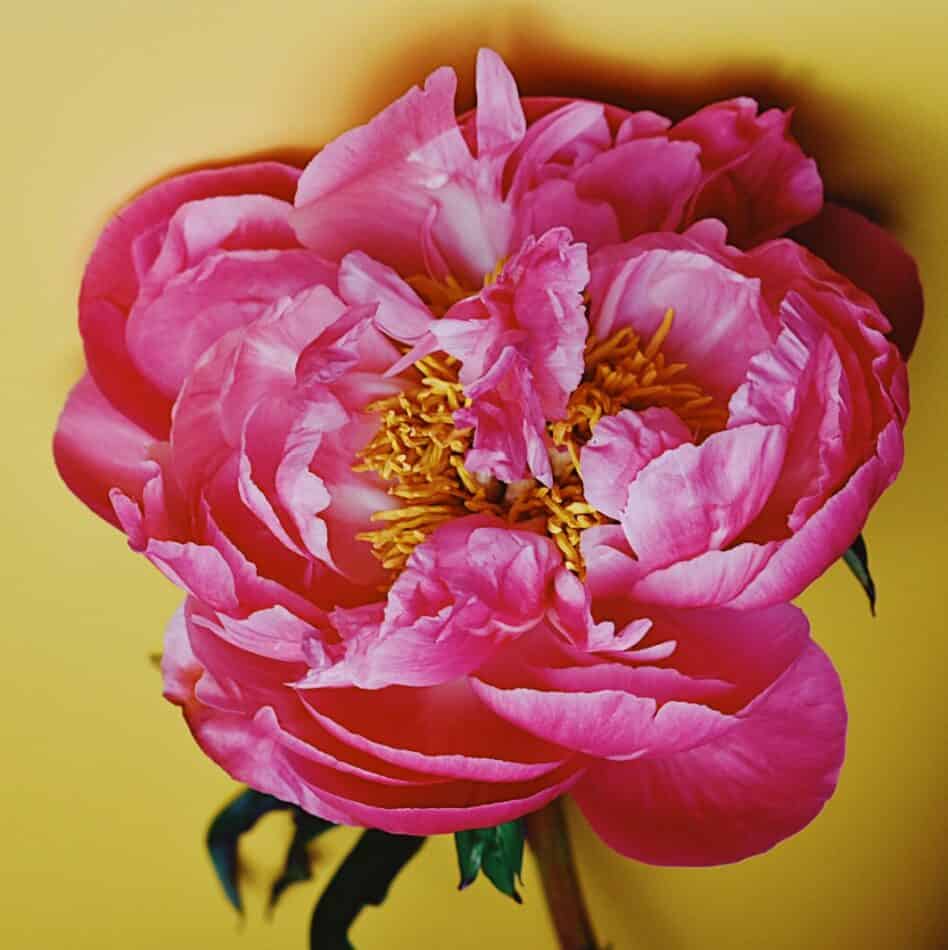These brightly-colored blooms are a sight to behold in any garden. Zinnias bloom from early summer through to the first frost with a wide range of colors, shapes and heights to choose from. They typically grow up to three feet tall, with rows of petals exposing the center of the flower. Zinnia elegans is a species of the genus Zinnia of the family Asteraceae.
The genus name is derived from the German botanist and professor Johann Gottfried Zinn (1727-1759), who studied ophthalmology and botany at the University of Göttingen in Germany. The species name “elegans” means graceful in Latin.
How to Plant and Grow Common Zinnia
Zinnia plants need full sun and plenty of water to grow healthily. In the hottest months, they’ll need extra attention, with water and fertilizer on hand. Zinnias can tolerate soil with a pH ranging from alkaline to slightly acidic, but for best results, aim for neutral, well-drained soil with an organic matter content of 1-3%. This ensures that the plants are getting the right level of nutrition. If you plan to grow your zinnias in a pot, select a soil-less container mix with added nutrients, rather than a simple potting mix without extra nutrition.
Zinnias should be grown in a warm, sunny spot. While they can tolerate some shade, they will not reach their full potential in any mildly shady spots. If soil temperatures are regularly below 80℉, the Zinnias may not bloom or they may fail to grow at all. They should be planted after the soil has had a chance to warm up. Root rot can be an issue with Zinnias if there’s too much water and too little air circulation, so make sure it’s planted in a place with good airflow.
Meaning and Symbolism
In 19th century Europe, Zinnias were grown to express a wide range of sentiments. They could express thoughts of lasting affection, celebration of prosperity, and even symbolize the growth of friendship. These days, Zinnias are used to convey that somebody cares for the recipient, especially in shades of white and yellow. In Mexico, Zinnias are symbols of enduring love. They’re also seen as symbols of goodness in many cultures.
History, mythology, and religious significance
Zinnias have been grown in Mexico for many centuries, and in Europe and the United States since the 1800s. The Aztecs considered zinnias to be symbols of endurance, strength, and lasting affection. In some forms of Aztec mythology, the creation of the universe was said to have emerged from a single flower – believed to be a zinnia.
In Christianity, zinnias are seen as symbols of faith and the Christian virtues of patience and perseverance.
Flower varieties and their defining characteristics
Common Zinnia and Zinnia Elegans are available in numerous flower varieties and cultivars, ranging from single and double petals to both annual and perennial types. The most popular varieties are the double flowered forms with large, fragrant flower heads. The “Dreamland” variety features bright double flowers in shades of blush and rose with creamy yellow centers. The “Quedney Green” variety has white, single-petaled flowers striped with green.
The “Macarenia” variety has large, deep purple petals with white centers. The “Pop Art White and Red” has small, white daisy-like flowers with bright red centers. Finally, “Queeny Lime Orange” has vibrant, orange-yellow petals with green tips.
How to Pot and Repot
Zinnias can be easily grown in both pots and garden beds. When potting Zinnia plants, it’s important to remember that they are heavy feeders and need rich, aerated soil to do well. Be sure to choose a pot with at least eight inches of depth and make sure to use a well-draining potting soil with added fertilizer.
Repotting should only be done in the spring. When repotting, be sure to choose a pot only two inches wider than the pre-existing pot. It’s also important to make sure the pot has adequate drainage: be sure to place stones or pebbles at the bottom of the pot to ensure good drainage. Repotting is also a great opportunity to replace old soil with fresh soil.
How to Prune
If you want to ensure your zinnias look their best, pruning is essential. Start pruning in the early spring, when the plants are just starting to grow, by snipping off any old, dead, or wilted flowers. Pinching back newly growing shoots to the top two buds when they’re six inches high also encourages bushier, denser-looking plants and helps to prevent legginess.
Throughout the summer, prune off any wilted flowers on a regular basis. The act of pinching back the stems after harvest encourages more flowers to grow and helps the plants to maintain good air circulation. Finally, in fall, deadhead the plants to ensure that the last of the foliage is kept away, which will help to protect the roots and stem from winter damage.
How to Propagate
Zinnia plants can be propagated in several ways: through division, cuttings, and seed. Division is a simple way to propagate Zinnia plants. Begin by digging up the plants and carefully separate each one from the other. Divide the plants so that each division has several strong roots. It’s important to wait for the soil to dry a bit before attempting to dig and divide the plants, as wet soil will make it more difficult. Once you’ve divided the plants, you can transplant each division as desired.
Propagating through cuttings is also simple. Start off by cuttings a few non-flowering stems and place them in moist, well-draining soil. If the cuttings have leaves, ensure to remove the lower leaves and only keep the new, healthy leaves at the top. Once the cuttings are in place, water them and they should begin to root quickly.
Finally, Zinnias can also be propagated through seed. Plant the seeds one to two inches apart and water them lightly but consistently. Zinnia seeds come in many different shapes, sizes and colors, so choose the type you prefer and be sure to look up the color and type of seeds you’re using. Finally, place an old sheet or newspaper over the seeds to provide shade and keep the soil moist for four to six weeks, at which point the seedlings should emerge.
Common Pests and Diseases
Zinnias are prone to several pests, including aphids, whiteflies, leafhoppers, and thrips. It’s important to check the underside of the leaves regularly and look for signs of infestations. If you notice any of these pests, remove them manually or use an insecticidal soap spray. For severe infestations, more potent insecticides may be necessary.
Zinnias can also be affected by several diseases, including fungal and bacterial diseases. The most common diseases include blight, powdery mildew, and rust. To prevent or reduce the impact of these diseases, make sure the plants have plenty of air circulation, water them at the base of the plant, and space the plants at least 10 inches apart. If the plants become infected, remove any infected plant parts and spray the plants with either neem oil or an approved fungicide.
Three Frequently Asked Questions About Zinnia Elegans
1. What soil type is best for Zinnia Elegans?
Answer: Zinnia planted in neutral, well-drained soil with an organic matter content of 1-3% is best. If grown in a pot, select a soil-less container mix with added nutrients.
2. How much sunlight does Zinnia Elegans need?
Answer: Zinnia Elegans need full sun to grow healthily. They can also tolerate some shade, but won’t reach their full potential.
3. Is Zinnia Elegans easy to care for?
Answer: Yes, Zinnia Elegans is quite easy to care for. They are heavy feeders and need rich, aerated soil and plenty of water. It’s important to check for pests and diseases. Pruning and deadheading are also essential in order to ensure the plants look their best.
Table Fact Sheet, with Data
| Common Zinnia and Zinnia Elegans | Asteraceae |
|---|---|
| Plant Type | Annual |
| Mature Size | 3 feet tall |
| Sun Exposure | Full sun |
| Soil Type | Neutral, well-drained |
| Soil pH | 6.2 – 7.5 |
| Bloom Time | Early summer – first frost |
| Flower Color | Wide range of colors |
| Hardiness Zones | 3-9 |
| Native Area | Mexico |
What we love from Amazon this week
Buy these wonderful flowers directly from Amazon:















